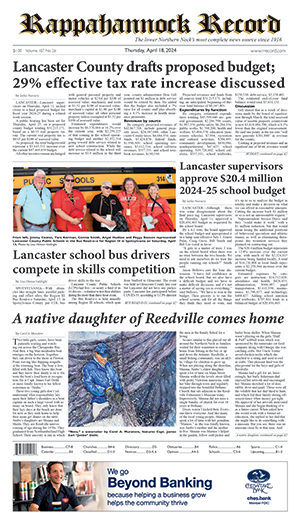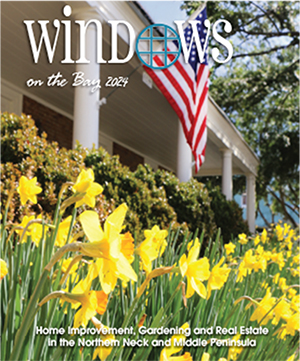by Rona Kobell, Bay Journal News Service
Chesapeake Bay crabbers will likely face some harvest restriction this season to protect future generations of the iconic crustacean, a move managers say is necessary because of the low population of juveniles.
Fishery managers for Maryland, Virginia and the Potomac River Fisheries Commission all say they are considering shortening the season and imposing stricter limits on the harvest of female crabs. They are not proposing changes in male crab catches.
Winter dredge survey results released in April showed the highest number of female crabs in the 28-year history of the annual count. Female crabs clocked in at 254 million, a 31% increase over last year.
But the Baywide survey, which counts the crabs in more than 1,000 locations as they burrow in the mud, estimated there were 125 million juvenile crabs in the Chesapeake, a 54% decrease from the 271 million found in 2016. That is the lowest tally since 2013 — a year when crabbers also had their catch curtailed — and one of the five lowest estimates since 1990, managers said.
As a result, managers are expecting a robust harvest for the first half of this year, fueled by the large number of adults now in the bay. But catches of the Chesapeake’s most valuable seafood will need to be curtailed later in the year to protect the smaller number of juvenile crabs as they reach market size.
Maryland and Virginia are both expected to decide by the end of June on harvest restrictions, which will take effect for the remainder of the 2017 season. The Potomac River commission will discuss its plan at its June 1 meeting, said executive secretary Martin Gary.
Last year’s survey results were so good that both Maryland and Virginia extended the season for about three weeks.
As with this year’s survey, the 2013 crab canvass showed a robust population of females and low abundance of juveniles, which are 2.4 inches across or smaller yet can be expected to grow to market size by next year. Maryland responded then by tightening bushel limits and shortening the season, aiming to cut the harvest 20–40%. The move worked, as the population rebounded enough to relax the limits and extend the season for 2015, said Maryland Department of Natural Resources assistant director of fisheries and boating services Mike Luisi.
Not every crab scientist approves of how management has reacted to the year-over-year changes. Tom Miller, a crab specialist who directs the Chesapeake Biological Laboratory at the University of Maryland Center for Environmental Science, said it’s hard to evaluate the population’s long-term stability and the harvest it can withstand if management reacts seasonally. Crabs live between one and three years and can reproduce furiously, or not much at all. After being spawned near the mouth of the bay, their offspring hitch a ride on ocean currents back into the Chesapeake. Some years, many return; some years, many don’t.
“I am not convinced that we need to change management,” Miller said. “One of my concerns has been that managers have been too responsive to individual winter dredge survey results. The reference points are meant to be long-term responses of the crab population under constant conditions—and as a result, frequent changes to the management regime makes evaluation of this problematical.”
The Maryland DNR will decide what, if any, changes to make in crabbing regulations in consultation with its Tidal Fisheries Advisory Commission. No meeting date has been set. Once the department decides, it will put out a notice for the change, to take effect 48 hours later.
The Virginia Marine Resources Commission will likely make a decision at its June 27 meeting. Commissioner John M.R. Bull said he expected to take some action, and that repeating last season’s late closing on December 15 and this year’s early opening on March 1 would not be possible, given the drop in juvenile numbers.
“This year’s babies are next year’s mamas,” Bull said. “We want less of them to be harvested in the fall, so they will be able to be next year’s mamas. There was a warning sign and a blinking light that went on with the juvenile numbers; that means we have to be cautious in how we handle the spring fishery. I’m not exactly sure what it will be, but we need to do the right thing in light of the low levels of juveniles, for the health of this fishery.”
One option that is not likely to pass muster at the commission is the reopening of the winter dredge fishery, where crabbers take pregnant females that are burrowed in the mud. Virginia closed the fishery in 2008 after that year’s winter survey found the crab population had hit a historic low.
Every year since, crabbers have lobbied to reopen the winter dredge fishery to provide a winter income and allocate the pain of cuts fairly among all crabbing sectors. But the commission has declined. The reopening is on the agenda again for the commission’s June meeting, but Bull said the low juvenile numbers “seem to preclude the re-opening” of that fishery.
Bay Journal staff writer Rona Kobell is a former reporter for the Baltimore Sun.











